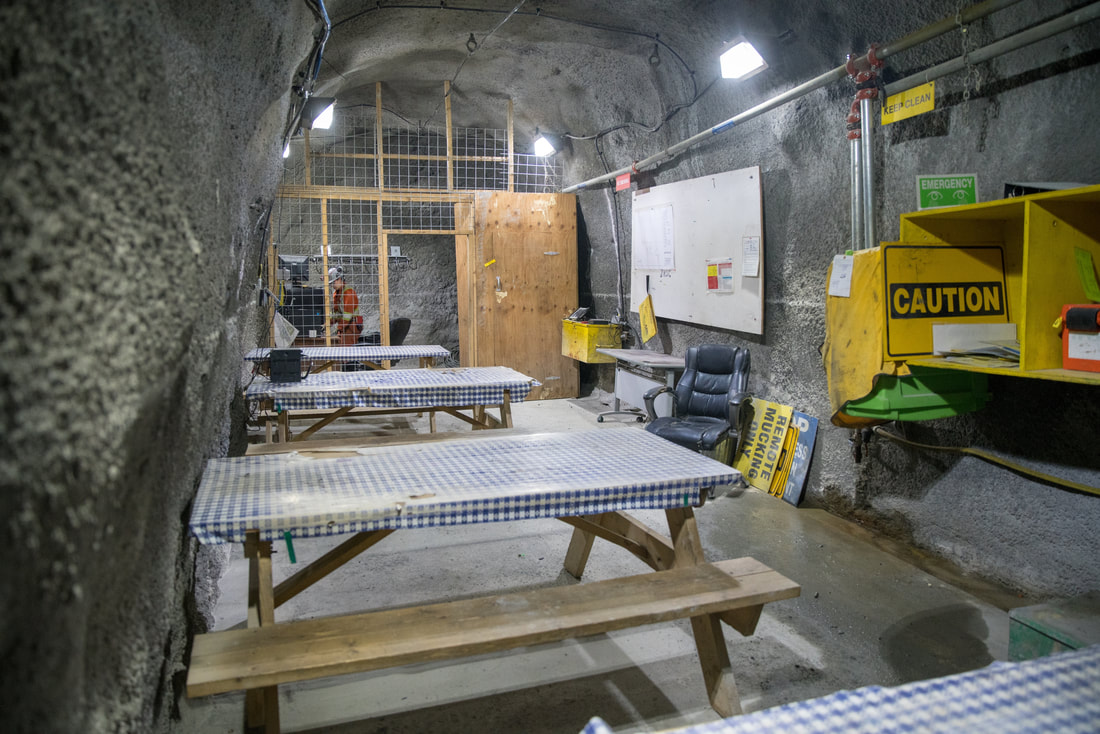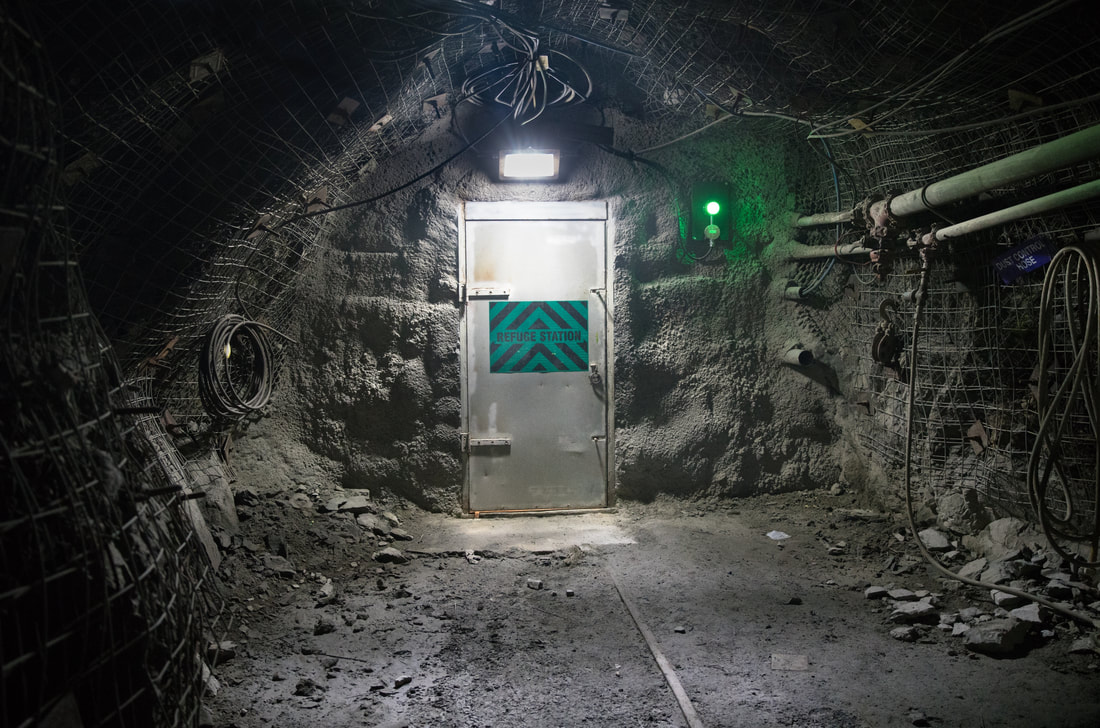Refuge stations have been around since the 1930’s when they were introduced to the Ontario Mining Act. The refuge station’s primary function is to be a safe place to go during an emergency. However, most refuge stations serve a dual purpose and act as meeting/lunch room underground. Each level has a refuge, and anyone who enters the mine needs to know the location of the closest refuge in case of an emergency.
|
Refuge Stations Must:
|
You Might Also Find...
|
What To Do In An Emergency?
While mines tailor emergency and refuge procedures to their site, the basics are the same. These include:
If you cannot make it to the refuge station, head to a fresh air way, create a barricade in a dead-end drift or use your jacket to create a breathing tent at a compressed air point.
- If you see a fire or hear a rock blast, immediately head to the closest refuge station and report it. People on the surface will notify other underground workers
- Seal the door, if the air outside is contaminated
- Assign someone to let others in
- If you smell the stench gas (smells like rotten eggs), go to the closest refuge station
- Seal the door when expected people have arrived
- Report everyone who enters the refuge
- Do not leave the refuge until it is deemed safe, or mine rescue arrives
If you cannot make it to the refuge station, head to a fresh air way, create a barricade in a dead-end drift or use your jacket to create a breathing tent at a compressed air point.
Timeline
Historic Red Lake Mining
Red Lake Geology
The Red Lake Gold Rushes
From Hudson to Headframe
Community Development
Commerce
Education
Medicine
Recreation
Mining Practices
Going Underground
Equipment
Extraction
Milling
The Mill Process
Safety
Refuge Station
Mine Rescue
Health Issues
Jobs
Contemporary Red Lake Mining
Environment
Labour
Innovation
Exploration
Indigenous Rights
Gold Prices
Mining and Exploration Companies
Goldcorp Inc.
Rubicon Minerals
Premier Gold Mines
Pure Gold Mining
Rimini Exploration & Consulting
Other Mining & Exploration Companies
Glossary


